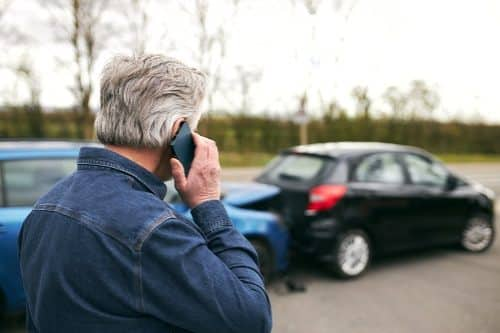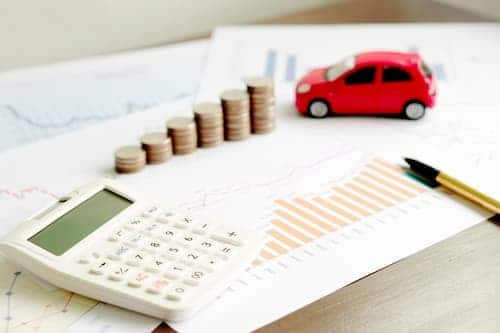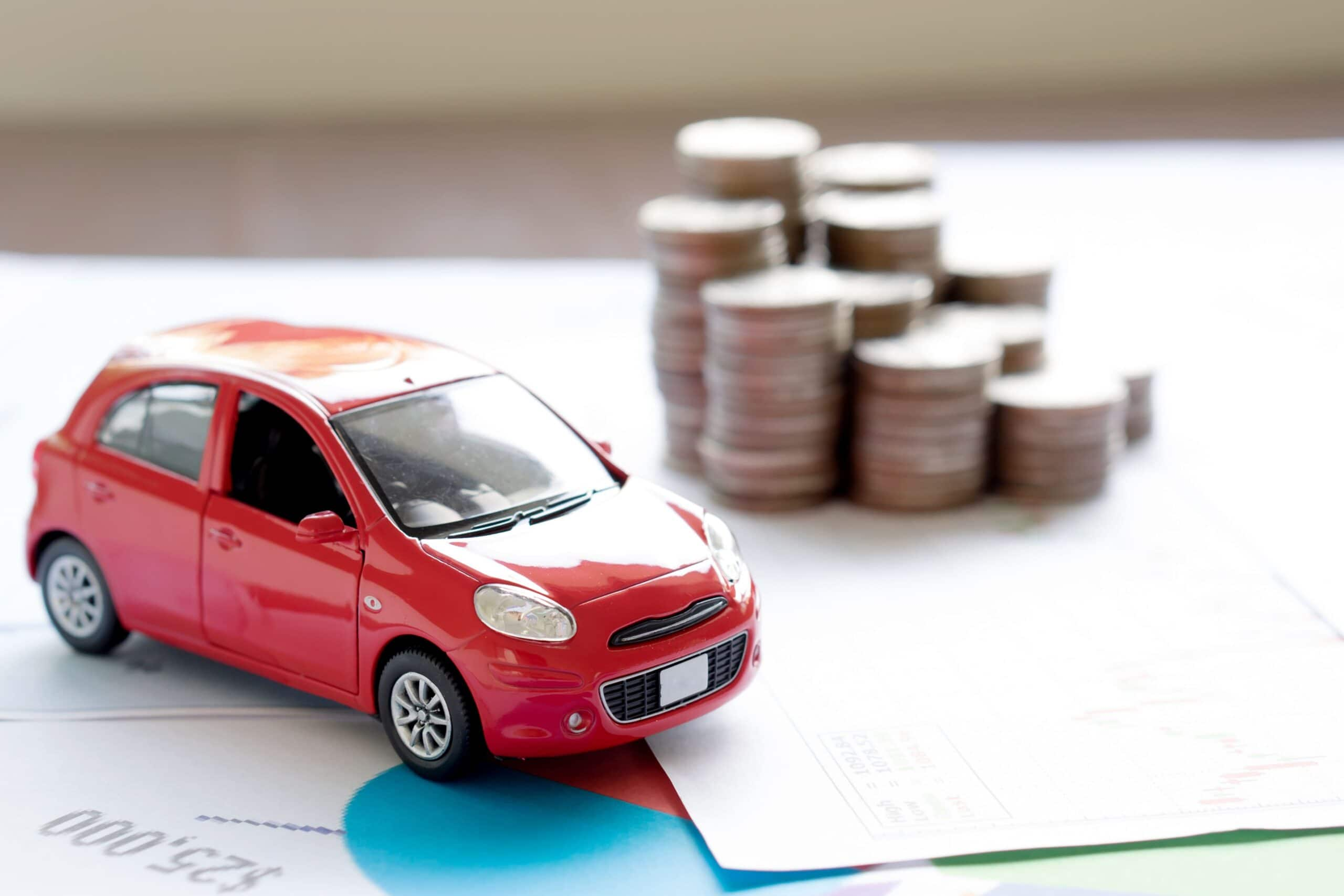What is a dashcam?
A dashcam is simply a digital video camera that mounts to your vehicle’s dashboard or windshield. It records the road in front of the vehicle and if you are in an accident or witness an accident the dashcam can be a reliable and impartial witness to what happened.
Some dashcams come with a rear camera as well which allows you to record what is happening behind your vehicle as well as document any rear-end collisions.
Dashcams record video onto an SD card and when the card is full it starts recording over old data in a continuous recording or loop recording feature, so you are constantly recording what is happening out on the road.
Dashcams come in a variety of styles and price points. They can record in 720p, 1080p, 1440p, some even take the resolution up to 4k. They can be powered via a 12-volt outlet, hardwired with a hardwiring cable, or an OBD-2 cable.
Dashcams can also be loaded with a wide variety of features including night vision, 24-hour parked-car monitoring which can help identify any hit-and-runs drivers. GPS tracking and time and location stamping are also common features. Some dashcams connect to an app on your phone and allow you to view and download video remotely and even access your smartphone’s playlist.
Does any insurance company offer car insurance discount for dashcam?
In some countries, most notably the United Kingdom and jurisdictions in Europe, many insurance companies offer drivers a discount if they have a dashcam installed. Until recently, no car insurance companies in the U.S. offered a specific dashboard camera discount.
That changed in November of 2021 when Branch Insurance, a startup founded in 2017 in Columbus, Ohio, began offering drivers an 8% savings on auto insurance rates with the installation of a Nextbase dashcam.
In announcing the discount, Branch Insurance CEO Steve Lekas says he viewed the partnership with Nextbase as another step in leveraging technology to reduce claims processing times, making it possible to pass the savings along to customers.
While Branch is one of the first insurers in the U.S. to offer a dashcam insurance discount, Brooker says to expect more news soon. Branch was a first mover, but we are already talking to multiple national insurance providers, he adds.
Even without a dashcam insurance discount, merely having a dashcam can indirectly affect your premium, which in turn helps keep your car insurance rates down.
Keep reading to learn all about dashcams and seven reasons you should consider putting one in your vehicle.
How much does a dashcam cost?
Prices for dashcams vary based on the features. You can purchase a bare-bones version for under $100 or you can spend $400 or more for one that has all the bells and whistles.
Once you cross the $200 price point the cam should include high-end features such as 4K resolution, night vision, 24-hour parked-car monitoring, as well as GPS tracking.
What are the advantages of a dash cam?
If you’re thinking of putting a camera in your vehicle, here are several dashcam uses to think about:
1. Have a record of your accident
Drivers often have completely different memories and descriptions of an accident. With video proof that you weren’t the driver responsible for a car crash, you can save yourself from the he-said, she-said stress and from being found at fault by a car insurance company – and receiving higher auto insurance rates that go with that finding.
Your dash cam footage can also expedite your claim, as it may prevent you from having drawn-out discussions with insurance companies about who was at fault.
In a recent example, a Florida driver used footage from an accident in which he was rear-ended to prove he wasn’t at fault. As a result, his insurer waived the deductibleThe deductible is the amount you pay out of pocket for a covered loss when you file a claim..
2. Get out of a ticket
If you’re stopped for a traffic violation you didn’t commit, offer up your dash camera footage to the law enforcement officer before the ticket is written. If the officer won’t watch it, bring the footage to court to contest the ticket.
Moving traffic violations will normally result in points on your state driving record which can lead to higher car insurance rates. Not receiving a ticket – or beating a ticket in court due to video proof of no wrongdoing – will keep you from a nasty auto insurance surchargeAn increase in your auto insurance premium due to an at-fault accident or a moving violation. Learn more about how a surcharge affects your auto insurance premiums..
In New York, a two-way dash cam saved a driver from receiving a ticket for using his cellphone while driving. The officer let the driver go without a ticket after viewing dash camera footage showing the motorist wasn’t talking on his phone, but merely scratching and tugging on his ear.
3. Help fight insurance fraud
If you have a feeling the accident you were in, or just witnessed, may have been a “crash for cash,” turn over your dashcam footage to the insurance companies involved, or to the state insurance fraud unit, to investigate. Catching a fraudster in a staged accident can indirectly lower your rates.
The FBI estimates that the cost of insurance fraud is more than $40 billion per year. The agency estimates that the average family spends between $400 and $700 more in premiums each year because of fraud.
When auto insurers unknowingly settle fraudulent claims, all motorists pay hundreds of dollars extra each year because companies divide the cost of fraudulent claims among consumers.
Mercury Insurance’s Special Investigations Unit (SIU) often uses video to fight insurance fraud. For example, a car collision captured on a dash camera showing a driver making a sudden and unnecessary stop helped the Mercury SIU team defend their insured in a personal injury claim. The dashcam evidence directly resulted in the claim and pending lawsuit against Mercury’s customer being dropped.
4. Make you a better driver
Dancers look in the mirror to correct their technique, athletes watch video of their previous games to improve their play and you can review your daily driving footage to become a better driver. Reviewing how you drove in the last week can help you see ways to correct driving mistakes, such as braking too hard or switching lanes abruptly.
Stephen Sutherland, Managing Director of Cornmarket Insurance Services, a UK insurance broker, says experience in the British market has shown drivers with dashcams tend to be safer drivers. “These are drivers that are going out of their way to invest in technology to protect themselves. They tend to look after their vehicles more and they are more aware of their driving habits,” Sutherland says.
In the UK market, about one in seven cars are outfitted with a dashcam and data has shown 68% of drivers exhibited improvements in their driving behavior once a device was installed.
Being a better driver should lead to a good driving record, which should result in obtaining (or keeping) a good driver discount. A good driver discount is one of the best car insurance discounts to have since it can be up to 25% and typically extends to most of your auto coverages.
Additionally, better drivers have fewer at-fault accidents and at-fault accidents may increase car insurance rates. For example, one at-fault accident with property damage over $2,000 can increase your car insurance premium by an average of up to 53%.
5. Review your teenager’s driving skills
Drivers under the age of 25 have some of the highest car insurance rates. Insurers charge them higher rates because of their lack of experience behind the wheel and tendency to crash and file claims. Anything you can do to keep your young driver from getting in an accident or from getting a ticket – either of which is bound to raise your already high rates into the stratosphere – is well worth the effort.
A two-way dashcam or multiple dash cameras for a teen could be a good idea. That way, you can see not only how your teen is driving but what is going on inside of the vehicle. Is your teenager paying attention to the road or is he texting, on his cellphone or distracted by passengers? You can curtail bad behavior inside the car before it leads to an accident or ticket.
Keeping a driving record clean will lead to your child receiving a good driver discount quicker (typically, you must have a license with a clean record for at least three years to be eligible). There are many ways to lower your teen or young driver's insurance.
6. Have an eye on your unattended vehicle
Most dash cameras have an option that allows you to turn it on standby that permits the camera only to turn on if it feels motion in or around the car. So, if someone breaks into your car or hits your parked car and takes off, you may be able to review the dashcam footage and find the individual responsible.
If you can’t find the person on your own, then you can hand the footage over to your insurance company to prove how the damage was done (again might keep your rates low by keeping you from being found at fault for an incident) and also to the police to see if the culprit can be located and held accountable.
7. Capture unexpected events
You may not catch something as astonishing as meteors raining down like Russian dashcam owners captured a few years back; however, you may catch a deer darting out in the road causing your accident, a rock slide that damages your car or a neighbor’s tree that falls on your car during a storm.
With that footage in hand, you can show your car insurance company what brought about your claim and may save yourself from a surcharge.
How does a dashcam work?
Dashcams are mounted onto your dash or windshield and record the road as you are driving. They are typically powered by a cable that goes into the cigarette lighter or they can be hardwired into the vehicle's electrical system.
A dash camera starts recording as soon as the ignition is turned on and records on a loop. Each clip is saved onto a micro-SD card and when the card is full the loop starts over and records over the old data.
Many dash cams have a built-in g-sensor that will detect a change in acceleration. When an impact is detected, the camera will start recording and impact recordings are often kept in a separate folder, so they are not recorded over.
If a dash camera has a parking mode it will record any motion or impact while your vehicle is parked. The dashboard cam must be hardwired into the vehicle for parking mode to work.
Are there dashcam disadvantages?
In most cases, the advantages to having a dashcam outweigh the disadvantages but there can be cons to have a dashcam, here are just a few to consider:
- Distraction: This is probably the biggest disadvantage to a dashcam, it can be a distraction out on the road. Depending on where it is mounted it can create a blind spot.
- Theft: Dashcams are typically positioned in the top middle part of your windshield, making it very obvious for would-be thieves.
- Footage can work against you: While having footage that proves the other driver was at fault can be a big advantage, if the footage shows the accident was your fault, or that you were distracted while driving, a dash cam can quickly become a liability.
A dash cam can be a great addition to your vehicle, providing peace of mind when your car is parked, and it could end up keeping your insurance premium affordable if it documents another driver’s fault in an accident.
Frequently asked questions
What is a dashcam used for?
There are several reason to have a dashcam in your car, including: the footage provides a record of an accident and any traffic stops, it allows you to review you teenager’s driving skills, and, if your parked car is broken into, it may capture the intruder’s face.
Are dashcams worth it?
This is a question only you can answer. Dashcams can provide a lot of value for the money, possibly proving your innocence in an accident, capturing the license plate of a hit and run driver and if the dashcam has GPS functionality it may help emergency services locate you.
While you may not be able to get an insurance discount for your dashcam, it may be able to keep you from filing a claim that will push up your premium.
It is possible to purchase a dashcam for less than $100 (ones with more high-end features start around $200) making them very affordable.
Is dashcam footage admissible in court?
While it can vary by jurisdiction, in most cases, dashcam footage is absolutely admissible in court. This can be extremely beneficial if there is any question about who caused an accident, or how an accident unfolded.
It should be noted that you should only use a dashcam to record events that are happening in public view in a public area. You should not record on private property or if your vehicle is parked and facing private property.
In addition, if your dashcam records video or audio inside the vehicle, you need to inform any passengers that they are being recorded, if they refuse to consent you should turn off the camera.
Where should you put a dashcam in your car?
While the name would suggest that the best location for a dashcam is on the dashboard, in most cases, the windshield is the best place to mount your dashcam. In addition to giving you a clearer recording of the road, mounting it on your windshield is usually less distracting to the driver.
Most experts recommend mounting the dashboard cam near the rear-view mirror so that most of the dashcam is hidden behind the mirror and is not distracting to the driver. It also gives you a clear and wide field of view of the road.
It should be noted that some dash cams may have specific mounting requirements. You should always mount your dash cam according to the manufacturer’s instructions.
Do insurance companies get camera footage?
You may voluntarily submit your footage to the insurance company or investigating officers, but you’re under no legal obligation to do so. Keep in mind, if officers become aware that there is video evidence or the accident results in legal claims, a request to subpoena the footage may be submitted.
According to Enjuris, an online resource for legal advice, if you’re involved in accident or lawfully stopped by a police officer, they may also request to view your dashcam recording. You may refuse to provide it, but if the incident results in a legal claim, or is believed to have recorded a crime, it could be subject to a search warrant or subpoena.
You also have to keep in mind that different states have different legal requirements on where a dashcam can be mounted, as well as obtaining consent from those being recorded.
When in doubt, Enjuris recommends seeking the advice of a lawyer, even when you believe the footage exonerates you from causing the accident.
Does adding a dashcam lower insurance?
While most major insurance companies do not currently offer a discount for installing a dashcam in your vehicle.
Regardless, if your dashcam footage proves that you were not at fault in an accident or manages to capture the identity of the driver in a hit and run, it can save you from having to make a claim on your car insurance policy, preventing a premium increase.
It can also improve your driving and reduce your chances of an at-fault accident, which can help you to avoid increases in car insurance premiums.
--Additional reporting by Mark Vallet





